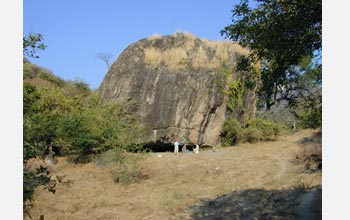Multimedia Gallery
Researchers excavated the Xihuatoxtla Shelter in Mexico finding 8,700 year-old maize remains.
Researchers focused on excavating the Xihuatoxtla Shelter in an area of the Balsas Valley in southwestern Mexico. Searching this lowland site represented a shift from previous searches in the Mexican highlands. The Xihuatoxtla archaeological site yielded evidence of maize and squash dating back 8,700 years, representing the earliest remains of maize yet discovered.
Credit: Anthony J. Ranere, Anthropology Department, Temple University
Images credited to the National Science Foundation, a federal agency, are in the public domain. The images were created by employees of the United States Government as part of their official duties or prepared by contractors as "works for hire" for NSF. You may freely use NSF-credited images and, at your discretion, credit NSF with a "Courtesy: National Science Foundation" notation.
Additional information about general usage can be found in Conditions.
Also Available:
Download the high-resolution JPG version of the image. (851 KB)
Use your mouse to right-click (Mac users may need to Ctrl-click) the link above and choose the option that will save the file or target to your computer.
Related story: Wild Grass Became Maize Crop More Than 8,700 Years Ago



